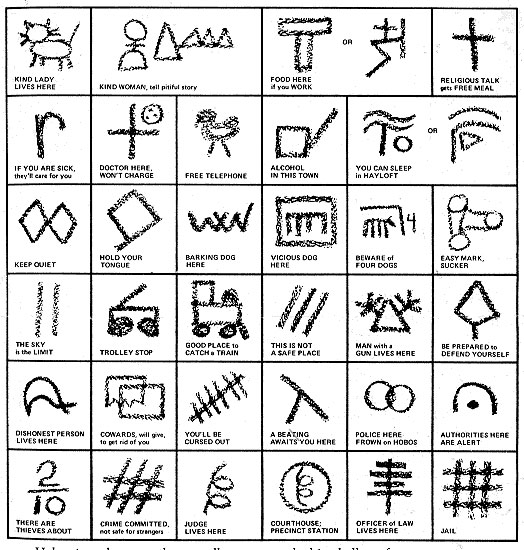It is unclear exactly when “Hobo” first appeared on the American railroading scene. With the end of the American Civil War in the 1860s, many discharged veterans returning home began hopping freight trains. Others looking for work and no prospects at home followed the railways west aboard freight trains in the late 19th century to try their luck elsewhere.
The origin of the word, Hobo, according to etymologists, was first noticed in circa 1890. It may be derived from the term hoe-boy meaning “farmhand”, or a greeting such as Ho, boy! Another possibility was from the railroad greeting, “Ho, beau!” or syllabic abbreviation of “homeward bound” or “homeless boy”.
In 1906, Professor Layal Shafee, after an exhaustive study, put the number of hoboes in the United States at about 500,000 (about 0.6% of the US population at the time). His article “What Tramps (another term used for hoboes at that time) Cost Nation” was published by The New York Telegraph in 1911, when he estimated the number had surged to 700,000.
Life as a hobo was dangerous. In addition to the problems of being itinerant, poor, and far from home and support, plus the hostility of many train crews, they faced the railroads’ security staff, nicknamed “bulls”, who had a reputation of violence against trespassers. The classic American hobo of the late 19th and early 20th centuries communicated through a basic system of markings, a code through which they gave information and warnings to their fellow ‘Riders of the Rails.’ Beginning in the 1880’s up until World War Two, hoboes placed markings on fences, posts, sidewalks, buildings, trestles, bridge abutments, and railroad line side equipment to aid them and others of their kind in finding help or steering them clear of trouble. Usually, these signs would be written in chalk or coal letting others know what they could expect in the area of the symbol.
Moreover, riding on a freight train is dangerous in itself. British poet W.H. Davies, author of The Autobiography of a Super-Tramp, lost a foot when he fell under the wheels when trying to jump aboard a train. It was easy to be trapped between cars, and one could freeze to death in bad weather. When freezer cars were loaded at an ice factory, any hobo inside was likely to be killed. Modern freight trains are much faster and thus harder to ride than in the 1930s, but they can still be boarded in rail yards.(not a safe, legal or recommended travel alternative!)
This chart is an example of some common symbols ~old-time emojis~ used during the height of hobo travel across the country. Modern day hobos (yes, they continue to be a part of American culture) communicate with cellular phones and e-mail!

